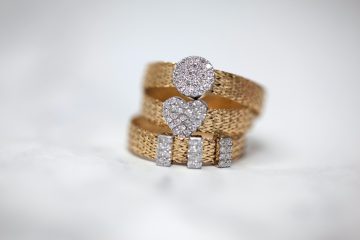Sapphire is a gemstone extracted from the mineral corundum that consists of alumina. A pure sapphire that contains only alumina is colorless, but corundum can also contain traces of other metals. A mixture of iron and titanium gives the sapphire the characteristic deep blue-blue color – sapphire blue simply. But sapphires can actually have any color – except red. If the mineral also contains traces of chromium, the stone may have a pink or red color change and is then instead called ruby.
The sapphire is one of the most exclusive gems along with diamond, ruby, sapphire, and emerald and is found in the crown jewels of several countries. Queen Silvia is a famous sapphire fan.
Sapphire Deposits
Sapphires occur mainly in bedrock that consists of marble and basalt. Sapphire deposits are found in several parts of the world, but mining of sapphires is mainly done in Burma, Australia, Sri Lanka, Thailand, Brazil, Cambodia, Kenya, and Malawi.
Different types of sapphire
Star sapphires usually have a milky gray-blue color with a light star with six rays appearing in concentrated sun or lamp light. The star sapphire is usually ground to an arched shape with a flat or convex underside.
Yogo sapphires are a type of sapphire found only in Yogo Gulch in the Little Belt Mountains of Montana, USA. Yogo sapphires are usually grain blue and have high clarity, and retain their brilliance even in artificial light.
Synthetic and glass-treated sapphire
Sapphires are an excellent gemstone to use in jewelry because they are hard and durable, but today it is also very common with synthetic sapphires, ie sapphires made by artificial means. They are mainly used for grinding in the industry but are also found in jewelry. Synthetic sapphire began to be used as early as the end of the 19th century and is thus also found in antique jewelry.
It is also common to perform different types of treatments on sapphires that have a slightly lower quality. If a sapphire has cracks in it, it is common to fill them with glass or other types of flux. A treated sapphire is much more delicate than an untreated one. With the right equipment, a trained gemologist can always determine whether a sapphire is natural or synthetic and whether the stone has been subjected to any treatment.



